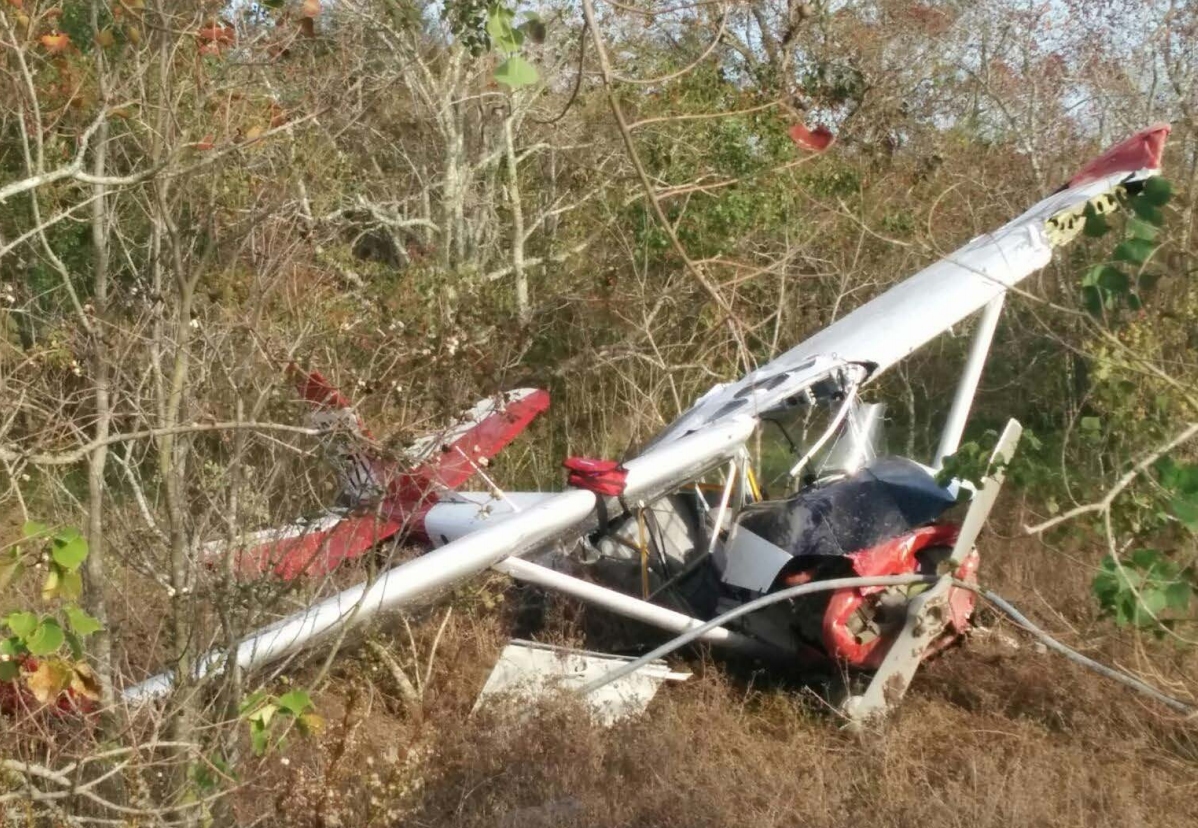
ASN Wikibase Occurrence # 181706
This information is added by users of ASN. Neither ASN nor the Flight Safety Foundation are responsible for the completeness or correctness of this information.
If you feel this information is incomplete or incorrect, you can submit corrected information.
| Date: | Tuesday 24 November 2015 |
| Time: | 14:47 |
| Type: |  Cessna 305A |
| Owner/operator: | Private |
| Registration: | N5312G |
| MSN: | 22746 |
| Year of manufacture: | 1951 |
| Total airframe hrs: | 1965 hours |
| Engine model: | Continental O-470 SERIES |
| Fatalities: | Fatalities: 0 / Occupants: 2 |
| Aircraft damage: | Substantial |
| Category: | Accident |
| Location: | Southland Field Airport, Sulphur, LA -
 United States of America United States of America
|
| Phase: | Take off |
| Nature: | Private |
| Departure airport: | Bell City, LA (52LA) |
| Sulphur-Southland Field, LA (KUXL) | |
| Investigating agency: | NTSB |
| Confidence Rating: |
After about 50 minutes of uneventful flight, the commercial pilot was performing touch-and-go landings. After completing the second touch-and-go landing, the pilot applied full power for takeoff, pushed the carburetor heat control to the forward (off) position, rotated off the runway, and started a standard climb to pattern altitude. While turning on crosswind to set up for a full-stop landing, the engine lost total power. The pilot executed a forced landing in a field with dense, wet vegetation, which resulted in substantial damage to both wings and the fuselage. The pilot-rated passenger reported that the entire flight was normal until the loss of engine power and forced landing. The weather conditions were conducive to the formation of moderate carburetor icing at cruise power or serious icing at descent power. Postaccident examination of the engine revealed that the carburetor was intact and was not impact damaged before disassembly. Further examination found water and corrosion in the carburetor bowl. Although the weather conditions were conducive to the formation of carburetor icing, because of the amount of water and corrosion found in the carburetor, it is likely that the fuel system was contaminated, which caused the loss of engine power.
Probable Cause: The loss of engine power due to water and contaminants in the carburetor, which resulted in a forced landing to a wet field.
Accident investigation:
 |
|
Sources:
NTSB
History of this aircraft
Other occurrences involving this aircraft
| 27 September 1984 | N5312G | Civil Air Patrol, Inc. | 0 | Anchorage, AK |  |
sub |
| 2 July 1986 | N5312G | Private | 0 | Figure Eight Lk, AK |  |
sub |
| 6 May 2010 | N5312G | Private | 0 | Fort Pierce, FL |  |
sub |
| Runway excursion | ||||||
Location
Images:

Photo: NTSB

Carburetor Bowl with Corrosion (Photo: NTSB)
Revision history:
| Date/time | Contributor | Updates |
|---|---|---|
| 24-Nov-2015 23:23 | Geno | Added |
| 25-Nov-2015 16:56 | Geno | Updated [Time, Aircraft type, Registration, Cn, Operator, Phase, Nature, Departure airport, Source, Narrative] |
| 21-Dec-2016 19:30 | ASN Update Bot | Updated [Time, Damage, Category, Investigating agency] |
| 06-Jul-2019 19:35 | ASN Update Bot | Updated [Nature, Departure airport, Destination airport, Source, Narrative, Accident report, ] |
| 06-Jul-2019 20:18 | harro | Updated [Narrative, Photo] |
| 06-Jul-2019 20:19 | harro | Updated [Photo] |
| 12-Sep-2023 20:54 | Ron Averes | Updated [[Photo]] |
Corrections or additions? ... Edit this accident description
The Aviation Safety Network is an exclusive service provided by:


 ©2024 Flight Safety Foundation
©2024 Flight Safety Foundation